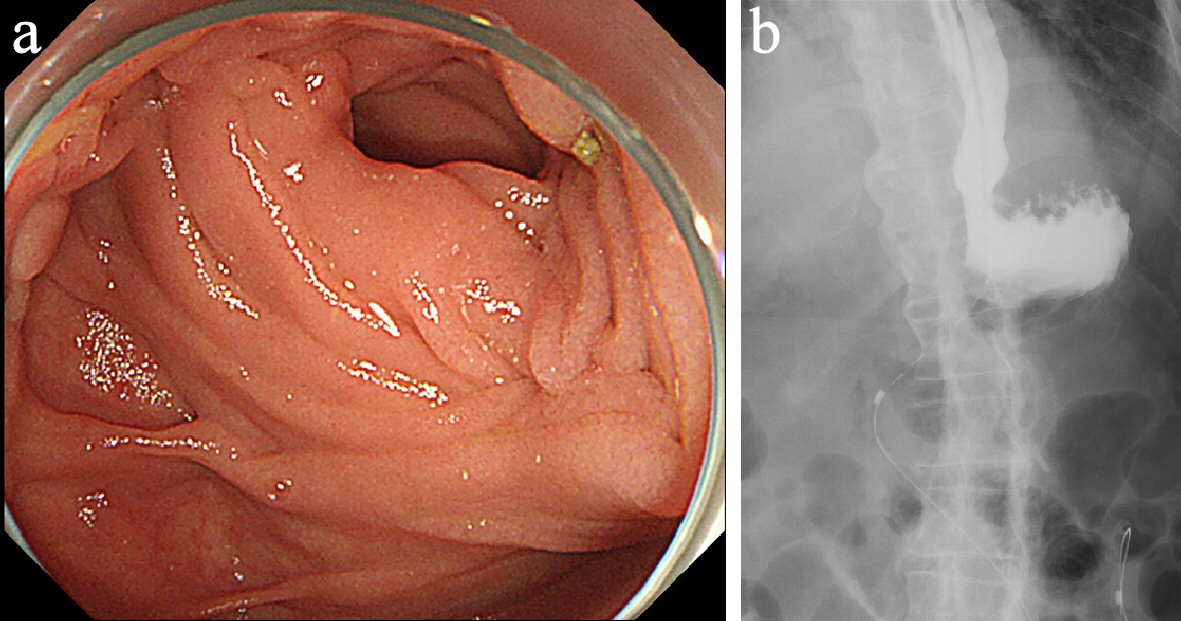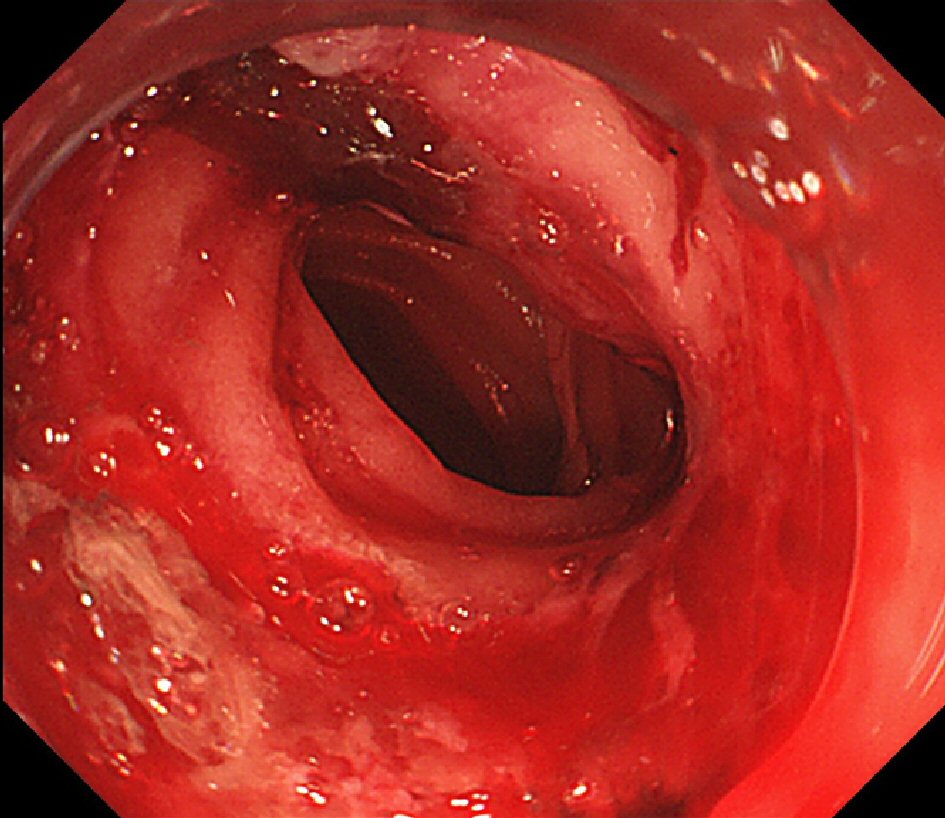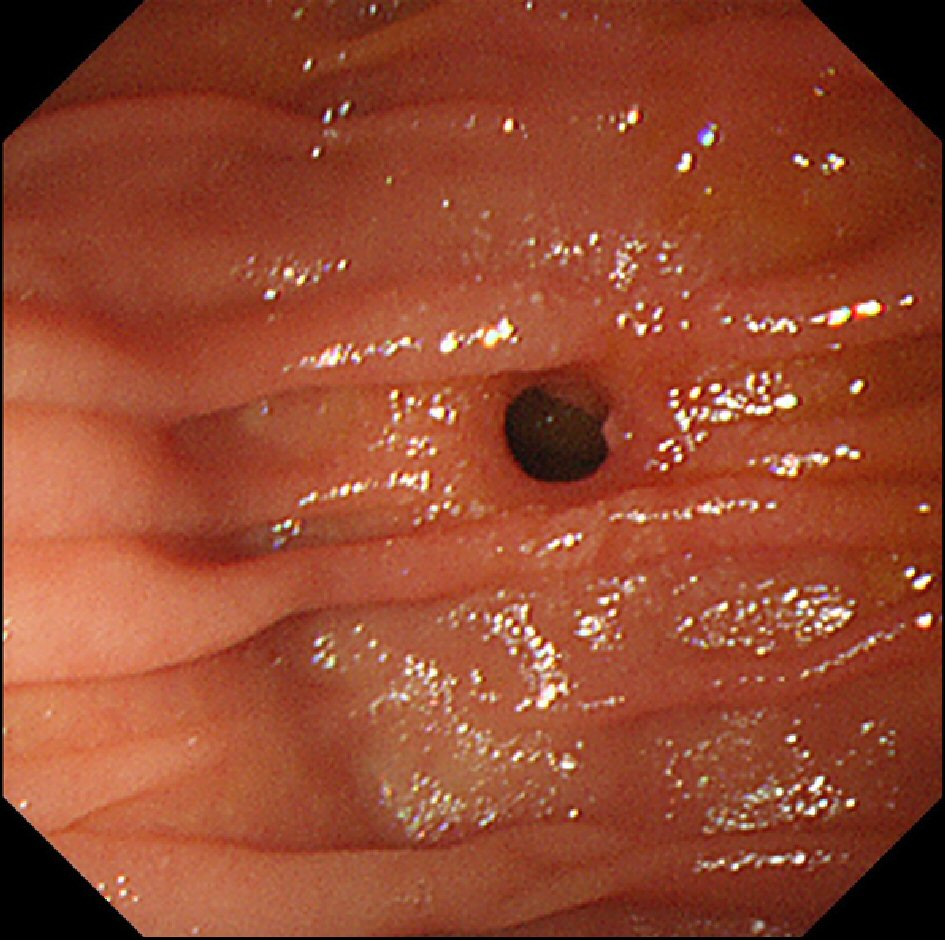
Figure 1. (a) Enteroscopy revealed jejunal kinking at the efferent loop of the anastomosis without stricture or tumor recurrence. (b) Fluoroscopy via a nasogastric tube showed gastric stasis of the contrast medium at the anastomosis and gastroesophageal reflux.


